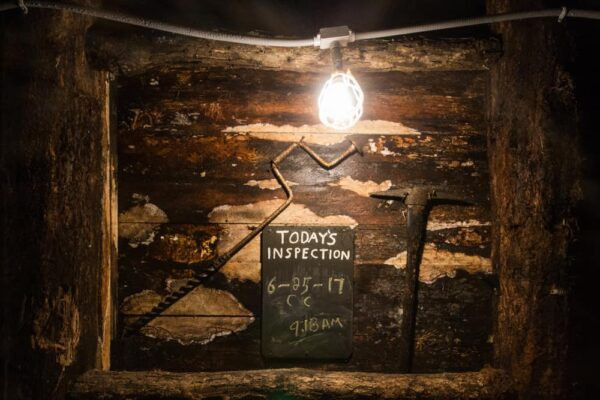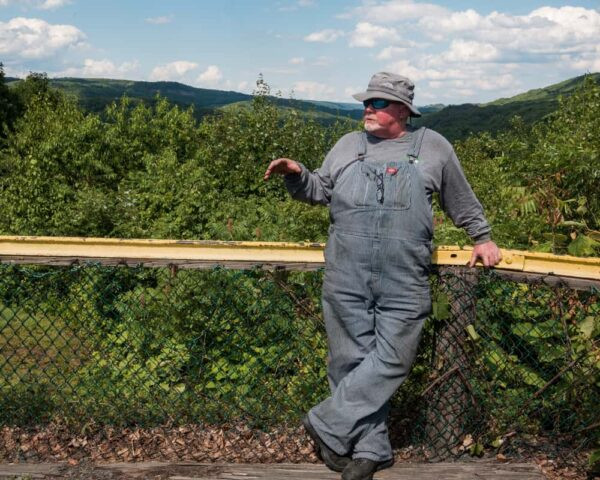Nestled in Ashland, Pennsylvania, within the historical anthracite coal region, the Pioneer Tunnel Coal Mine & Steam Train offers a unique journey into the past. From 1911 to 1931, this authentic mine, owned by the Philadelphia and Reading Coal and Iron Company, burrowed deep into Mahanoy Mountain, becoming a vital part of the local industry. Though closed during the Great Depression with the intention of reopening, the Pioneer Tunnel’s fate shifted from active mine to preserved historical site, offering a glimpse into the challenging world of early 20th-century coal mining.
Embark on an Underground Adventure: The Pioneer Tunnel Coal Mine Tour
In the early 1960s, Ashland sought to revitalize its economy and celebrate its heritage. This vision led to the transformation of the abandoned Pioneer Tunnel into a captivating tourist attraction. Opening in the summer of 1962, the Pioneer Tunnel Coal Mine provided an unparalleled opportunity to experience a genuine Pennsylvania coal mine and understand the lives of the miners who worked beneath the surface.
For over half a century, the Pioneer Tunnel Coal Mine and Steam Train has been a beloved destination in Schuylkill County. Situated on a gentle slope overlooking Ashland, adjacent to Higher Ups Park, it invites visitors to descend into the depths of a real coal mine and ride a vintage steam train along the original mining railway.
 Visitors ride in retrofitted mine cars at Pioneer Tunnel Coal Mine in Ashland, PA
Visitors ride in retrofitted mine cars at Pioneer Tunnel Coal Mine in Ashland, PA
The mine tour plunges visitors more than 1,800 feet horizontally into the mountain’s heart. Riding in authentic mine cars, originally used to haul coal, now retrofitted for passenger comfort (albeit a bumpy ride!), you’ll traverse the tracks deep into the earth. For taller individuals, opting for cars further back from the driver is advisable to avoid needing to duck during the ride due to varying car heights.
Reaching the end of the track, 400 feet underground, knowledgeable guides lead informative walking tours through the mine. These tours vividly illustrate the mine’s operations, detailing the procedures and the diverse roles of the miners. Life-sized mannequins strategically placed throughout the tunnel bring to life the conditions and tasks performed by miners a century ago, enhancing the immersive experience. The guides expertly explain the historical methods of coal extraction, providing a comprehensive understanding of the mining process.
Lasting approximately 40 minutes, the Pioneer Tunnel coal mine tour is an educational and engaging experience. Remember to bring a jacket or sweatshirt, as the mine maintains a constant chilly temperature of 52 degrees Fahrenheit (11 degrees Celsius) year-round.
Chugging Through History: The Pioneer Tunnel Steam Train Ride
Complementing the mine tour, a ride on the Pioneer Tunnel Steam Train offers another facet of the coal mining experience. This three-quarter-mile journey follows the original rail line used to transport coal from the mine to the colliery situated below.
Just like the mine cars, the steam train carriages are converted coal cars from the Pioneer Tunnel’s working days. Prepare for an even bumpier ride than the mine tour, adding to the authentic historical feel! However, the experience remains thoroughly enjoyable and provides further insight into the region’s coal mining heritage.
The steam engine, affectionately named “Henry Clay” after the 19th-century statesman who championed the coal industry, was built in the 1920s. Rescued from a scrap heap in the 1960s, this engine previously served at a Hazleton-area coal mine. Adding to its historical authenticity, the “Henry Clay” still runs on anthracite coal.
 Converted coal cars used to transport visitors on the steam train at Pioneer Tunnel in Ashland, Pennsylvania
Converted coal cars used to transport visitors on the steam train at Pioneer Tunnel in Ashland, Pennsylvania
After a scenic 10-minute ride to the line’s end, passengers are invited to disembark. Here, the conductor shares fascinating stories about the attraction’s history, the town of Ashland, and even the infamous underground coal fires of Centralia, Pennsylvania.
Looking beyond the train, a former strip mine scar serves as a stark reminder of the different surface mining techniques employed in the area. The conductor also showcases a recreated “bootleg coal mine,” explaining the operations and motivations behind these illicit mining activities. The return journey to the visitor center takes another 10 minutes, making the entire steam train experience approximately 30 minutes long.
Before departing, explore the outdoor exhibits of vintage mining equipment and informative displays around the parking area and visitor center. Inside the visitor center, a well-stocked gift shop offers souvenirs and local items, alongside a small restaurant for refreshments.
A short drive away, you can also witness another unique consequence of the region’s mining past: Pennsylvania’s only geyser, the Big Mine Run Geyser.
Plan Your Visit to Pioneer Tunnel Coal Mine in PA
Visiting the Pioneer Tunnel Coal Mine and Steam Train in Ashland, Pennsylvania, provides an invaluable opportunity to immerse yourself in the rich history of coal mining in the region and venture inside a real coal mine. While sharing similarities with other Pennsylvania mine tours like the Lackawanna County Coal Mine Tour in Scranton, Number 9 Coal Mine in Lansford, and Tour-Ed Mine near Pittsburgh, Pioneer Tunnel distinguishes itself with its unique tunnel mine experience and the captivating steam train ride.
Whether you’re a seasoned mine tour enthusiast or a first-time visitor, the Pioneer Tunnel Coal Mine and Steam Train promises an engaging and educational adventure into the heart of Pennsylvania’s anthracite coal heritage.
Pioneer Tunnel Coal Mine and Steam Train Visitor Information:
| Hours: Times vary seasonally. Check the official website for current schedule. Open April – October, with potential weekend openings in the off-season. | Cost: Coal Mine Tour: $12 Adults, $9 Children. Steam Train: $10 Adults, $8 Children. Combo Ticket: $19.80 Adults, $15.30 Children. |
|---|---|
| Website: PioneerTunnel.com | Address: 20th & Oak St, Ashland, PA 17921 |
Explore nearby attractions using the map available on their website.

